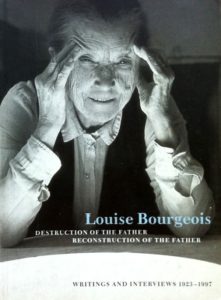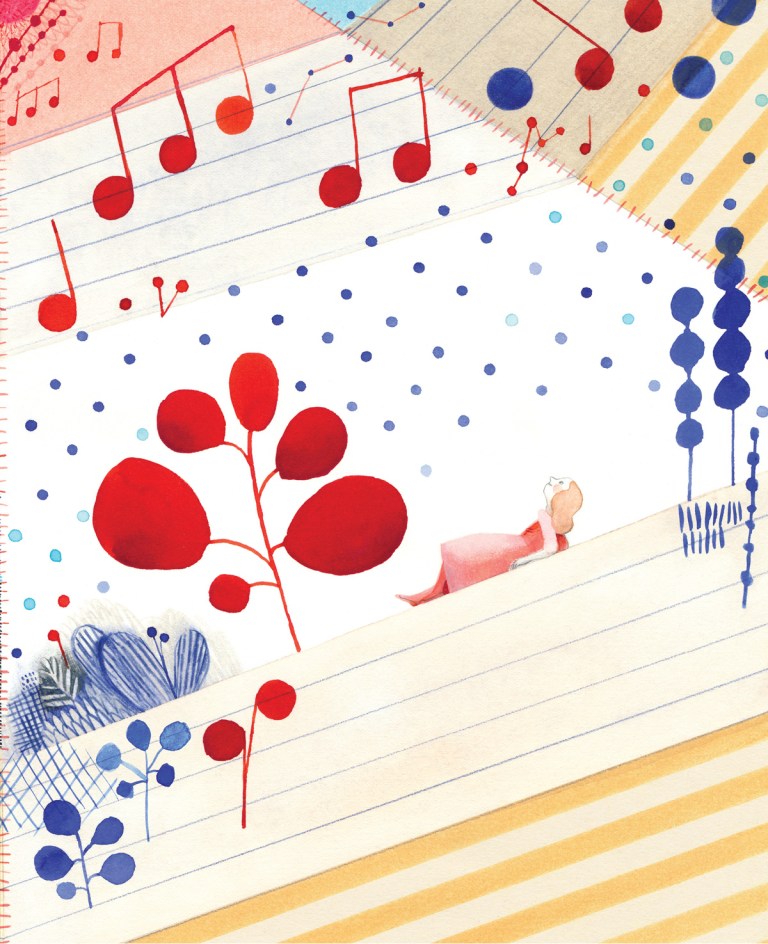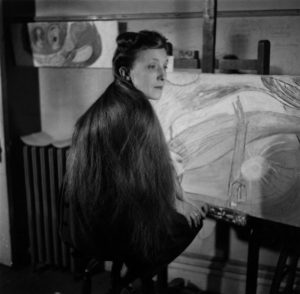Artist Louise Bourgeois on How Solitude Enriches Creative Work
INSPIRATIONAL, 24 Sep 2018
Maria Popova | Brain Pickings – TRANSCEND Media Service
“You are born alone. You die alone. The value of the space in between is trust and love.”
 “Nourish yourself with grand and austere ideas of beauty that feed the soul… Seek solitude,” young Delacroix counseled himself in 1824. Keats saw solitude as a sublime conduit to truth and beauty. Elizabeth Bishop believed that everyone should experience at least one prolonged period of solitude in life. Even if we don’t take so extreme a view as artist Agnes Martin’s assertion that “the best things in life happen to you when you’re alone,” one thing is certain: Our capacity for what psychoanalyst Adam Phillips has termed “fertile solitude” is absolutely essential not only for our creativity but for the basic fabric of our happiness — without time and space unburdened from external input and social strain, we’d be unable to fully inhabit our interior life, which is the raw material of all art.
“Nourish yourself with grand and austere ideas of beauty that feed the soul… Seek solitude,” young Delacroix counseled himself in 1824. Keats saw solitude as a sublime conduit to truth and beauty. Elizabeth Bishop believed that everyone should experience at least one prolonged period of solitude in life. Even if we don’t take so extreme a view as artist Agnes Martin’s assertion that “the best things in life happen to you when you’re alone,” one thing is certain: Our capacity for what psychoanalyst Adam Phillips has termed “fertile solitude” is absolutely essential not only for our creativity but for the basic fabric of our happiness — without time and space unburdened from external input and social strain, we’d be unable to fully inhabit our interior life, which is the raw material of all art.
That vital role of solitude in art and life is what the great artist Louise Bourgeois (December 11, 1911– May 31, 2010) explores in several of the letters and diary entires collected in Louise Bourgeois: Destruction of the Father / Reconstruction of the Father: Writings and Interviews, 1923–1997 (public library) — an altogether magnificent glimpse of one of the fiercest creative minds and most luminous spirits of the past century.
In September of 1937, 25-year-old Bourgeois writes to her friend Colette Richarme — an artist seven years her senior yet one for whom she took on the role of a mentor — after Richarme had suddenly left Paris for respite in the countryside:
After the tremendous effort you put in here, solitude, even prolonged solitude, can only be of very great benefit. Your work may well be more arduous than it was in the studio, but it will also be more personal.
A few months later, Bourgeois reiterates her counsel:
Solitude, a rest from responsibilities, and peace of mind, will do you more good than the atmosphere of the studio and the conversations which, generally speaking, are a waste of time.

Illustration by Isabelle Arsenault from Cloth Lullaby: The Woven Life of Louise Bourgeois by Amy Novesky, a children’s book about the beloved artist’s early life and how it shaped her art.
For Bourgeois, aloneness was the raw material of art — something she crystallized most potently half a century later, in a diary entry from the summer of 1987:
You are born alone. You die alone. The value of the space in between is trust and love. That is why geometrically speaking the circle is a one. Everything comes to you from the other. You have to be able to reach the other. If not you are alone…
Complement the immeasurably insightful Louise Bourgeois: Destruction of the Father / Reconstruction of the Father with Bourgeois on art, integrity, and the key to creative confidence and this almost unbearably lovely picture-book about her early life, then revisit Edward Abbey’s enchanting vintage love letter to solitude.
_______________________________________
 Brain Pickings is the brain child of Maria Popova, an interestingness hunter-gatherer and curious mind at large obsessed with combinatorial creativity who also writes for Wired UK and The Atlantic, among others, and is an MIT Futures of Entertainment Fellow. She has gotten occasional help from a handful of guest contributors.
Brain Pickings is the brain child of Maria Popova, an interestingness hunter-gatherer and curious mind at large obsessed with combinatorial creativity who also writes for Wired UK and The Atlantic, among others, and is an MIT Futures of Entertainment Fellow. She has gotten occasional help from a handful of guest contributors.
Go to Original – brainpickings.org
DISCLAIMER: The statements, views and opinions expressed in pieces republished here are solely those of the authors and do not necessarily represent those of TMS. In accordance with title 17 U.S.C. section 107, this material is distributed without profit to those who have expressed a prior interest in receiving the included information for research and educational purposes. TMS has no affiliation whatsoever with the originator of this article nor is TMS endorsed or sponsored by the originator. “GO TO ORIGINAL” links are provided as a convenience to our readers and allow for verification of authenticity. However, as originating pages are often updated by their originating host sites, the versions posted may not match the versions our readers view when clicking the “GO TO ORIGINAL” links. This site contains copyrighted material the use of which has not always been specifically authorized by the copyright owner. We are making such material available in our efforts to advance understanding of environmental, political, human rights, economic, democracy, scientific, and social justice issues, etc. We believe this constitutes a ‘fair use’ of any such copyrighted material as provided for in section 107 of the US Copyright Law. In accordance with Title 17 U.S.C. Section 107, the material on this site is distributed without profit to those who have expressed a prior interest in receiving the included information for research and educational purposes. For more information go to: http://www.law.cornell.edu/uscode/17/107.shtml. If you wish to use copyrighted material from this site for purposes of your own that go beyond ‘fair use’, you must obtain permission from the copyright owner.
